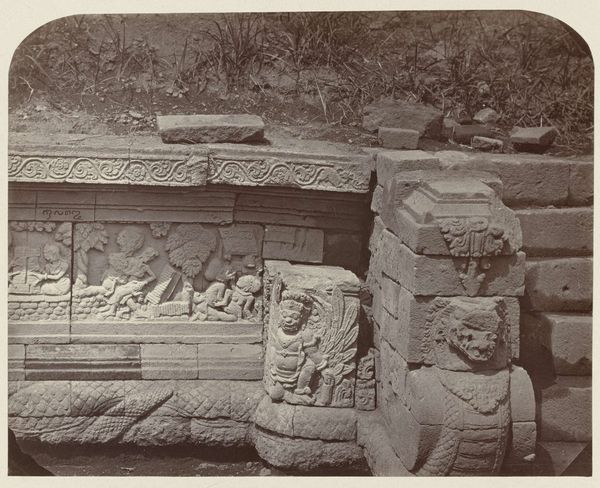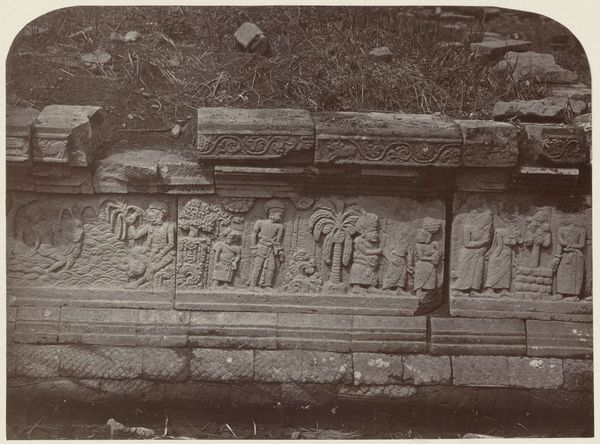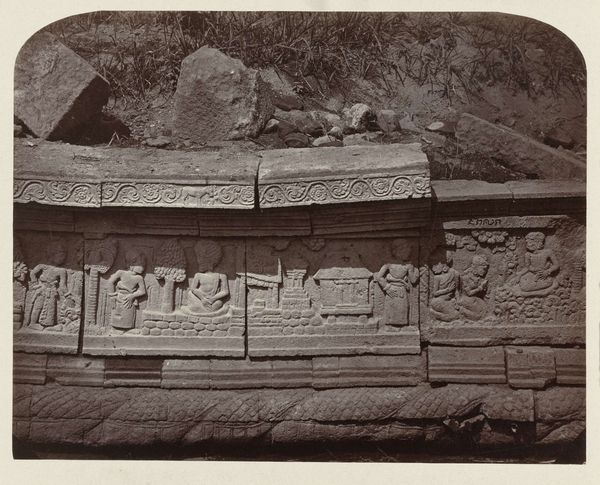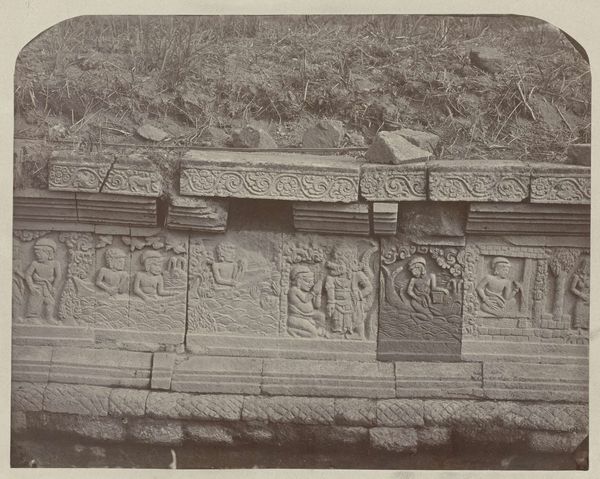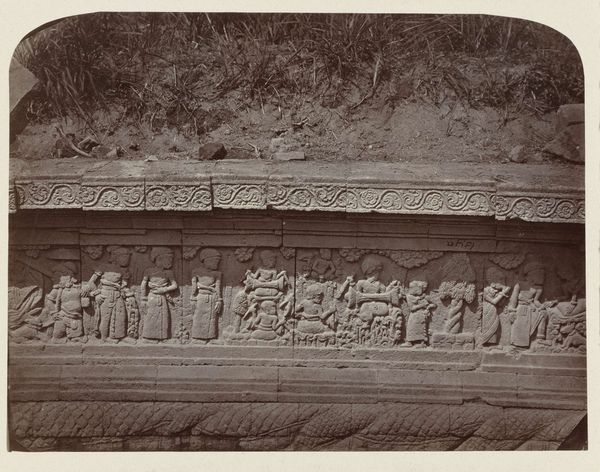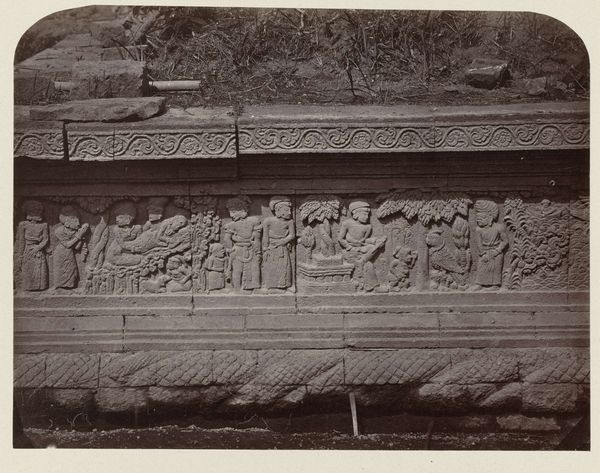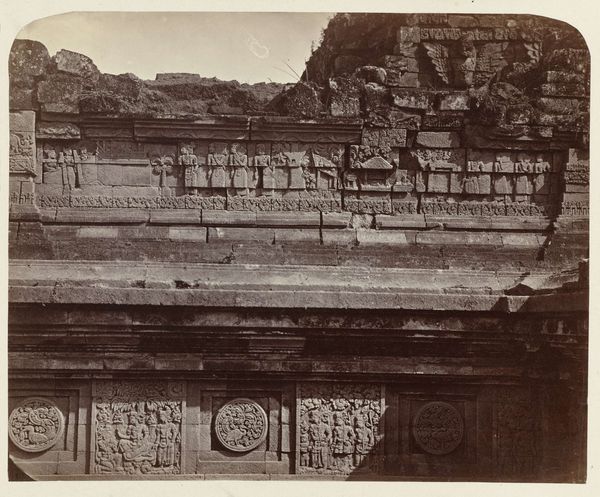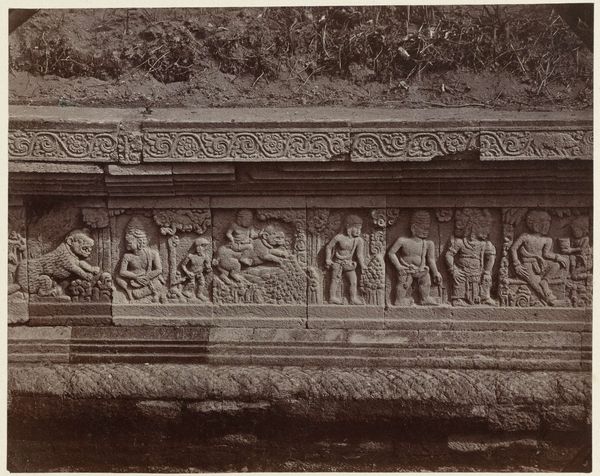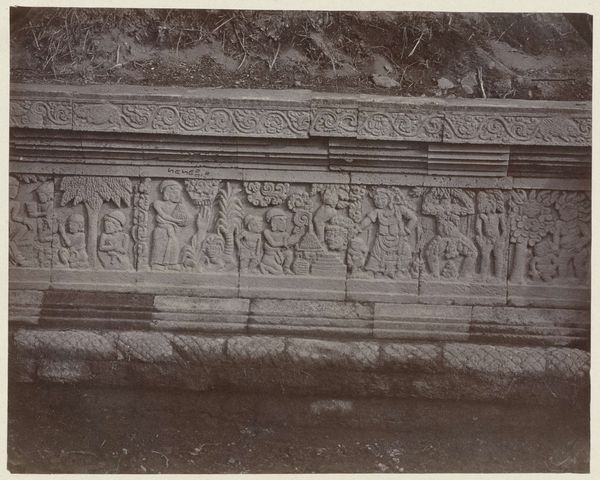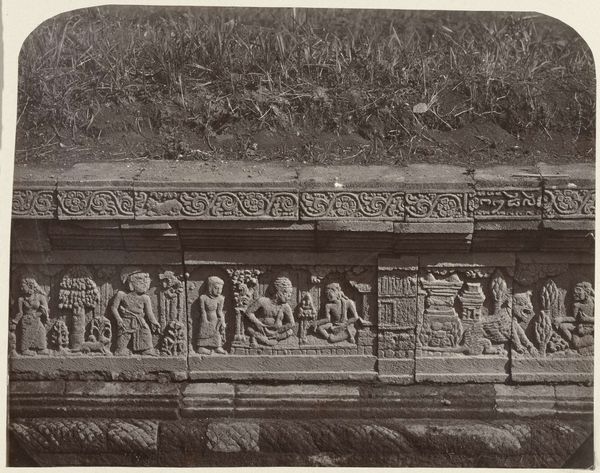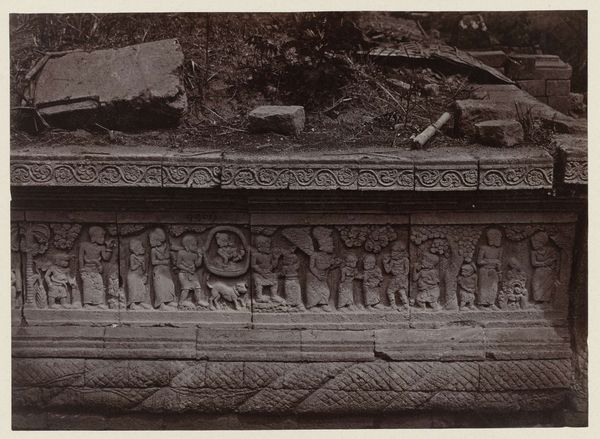
Basreliëf op het pendopo voetstuk aan de noordzijde van Candi Panataran. Possibly 1867
0:00
0:00
carving, print, relief, photography, albumen-print
#
portrait
#
carving
# print
#
relief
#
photography
#
carved into stone
#
ancient-mediterranean
#
albumen-print
Dimensions: height 240 mm, width 290 mm
Copyright: Rijks Museum: Open Domain
Editor: This albumen print, possibly from 1867, shows a bas-relief on the pendopo base at Candi Panataran, attributed to Isidore Kinsbergen. The intricate carvings create a dense, narrative scene. What story do you see being told in this work, and what can it tell us about the culture that produced it? Curator: This photograph captures more than just the physical relief. It allows us to think about cultural exchange and representation during a period of colonialism. Kinsbergen, a European photographer, documented Indonesian art, influencing Western perceptions. Whose stories are centered, and whose are marginalized through this lens? The bas-relief itself is narrating indigenous mythologies, likely a segment of a larger Javanese epic. Editor: It’s fascinating how the photograph acts as a mediator between cultures and across time. Does the act of photographing and preserving it in this format shift the power dynamics? Curator: Absolutely. Photography was often used as a tool to categorize and control colonized populations and their artifacts. By examining the photographer’s perspective, the way the relief is framed, and the potential biases embedded in the image, we start unraveling the complex relationship between the colonizer and the colonized, and the representation of culture within that dynamic. Who do you think this photograph was for, and why? Editor: I imagine it was originally intended for a European audience, perhaps to fuel academic interest or even colonial pride. I see now that even in documentation, there are underlying social narratives to consider. Curator: Exactly. By critically examining these historical contexts, we gain a richer understanding not only of the artwork itself but also the power structures shaping its interpretation. Every line, every shadow, every character contributes to a deeper interrogation.
Comments
No comments
Be the first to comment and join the conversation on the ultimate creative platform.
